Contact: +86 15677418852
Email: sales@hxgemstone.com
Cubic zirconia Gemstones
Cubic zirconia (CZ) is the cubic crystalline form of zirconium dioxide (ZrO2). The synthesized material is hard and usually colorless, but may be made in a variety of different colors. It should not be confused with zircon, which is a zirconium silicate (ZrSiO4). It is sometimes erroneously called cubic zirconium. Because of its low cost, durability, and close visual likeness to diamond, synthetic cubic zirconia has remained the most gemologically and economically important competitor for diamonds since commercial production began in 1976. Its main competitor as a synthetic gemstone is a more recently cultivated material, synthetic moissanite.
Because of its low cost, durability, and close visual likeness to diamond, synthetic cubic zirconia has remained the most gemologically and economically important competitor for diamonds since commercial production began in 1976. Its main competitor as a synthetic gemstone is a more recently cultivated material, synthetic moissanite.
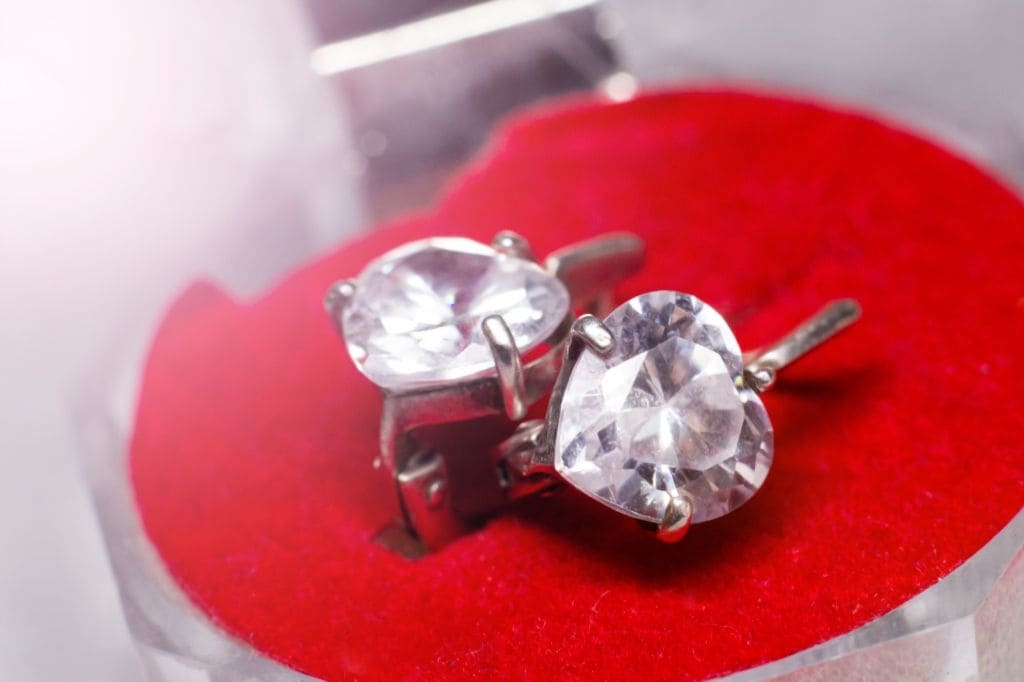
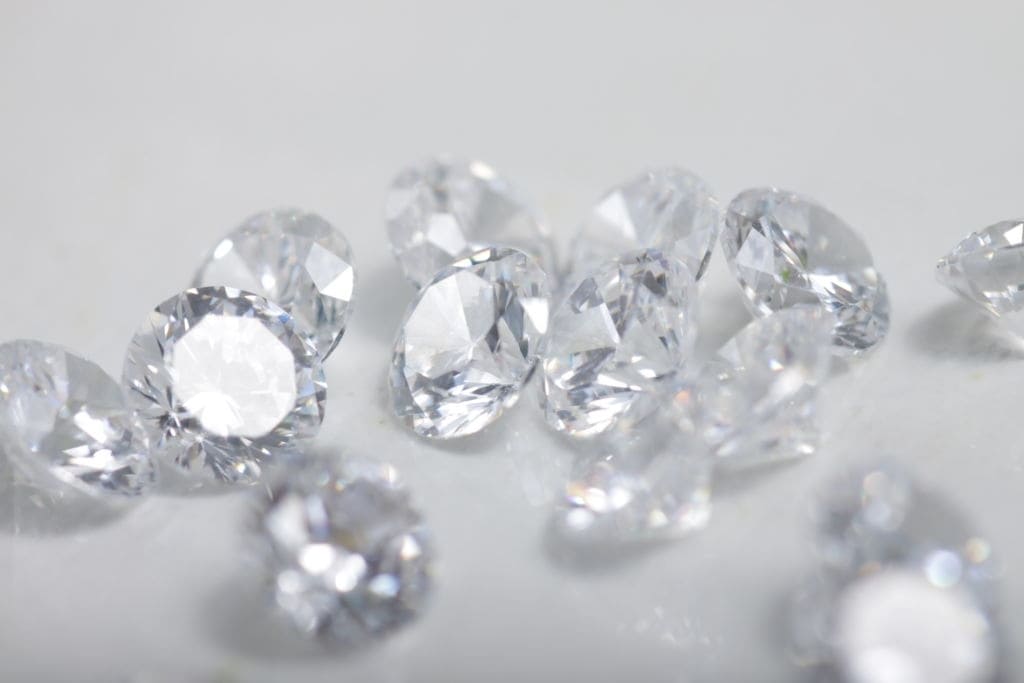
Technical Aspects
Cubic zirconia is crystallographically isometric, an important attribute of a would-be diamond simulant. During synthesis zirconium oxide naturally forms monoclinic crystals, which are stable form under normal atmospheric conditions. A stabilizer is required for cubic crystals (taking on the fluorite structure) to form, and remain stable at ordinary temperatures; typically this is either yttrium or calcium oxide, the amount of stabilizer used depending on the many recipes of individual manufacturers. Therefore, the physical and optical properties of synthesized CZ vary, all values being ranges.
It is a dense substance, with a density between 5.6 and 6.0 g/cm3—about 1.65 times that of diamond. Cubic zirconia is relatively hard, 8–8.5 on the Mohs scale—slightly harder than most semi-precious natural gems.[1] Its refractive index is high at 2.15–2.18 (compared to 2.42 for diamonds) and its luster is vitreous. Its dispersion is very high at 0.058–0.066, exceeding that of diamond (0.044). Cubic zirconia has no cleavage and exhibits a conchoidal fracture. Because of its high hardness, it is generally considered brittle.
Under shortwave UV cubic zirconia typically fluoresces a yellow, greenish yellow or "beige". Under longwave UV the effect is greatly diminished, with a whitish glow sometimes being seen. Colored stones may show a strong, complex rare earth absorption spectrum.
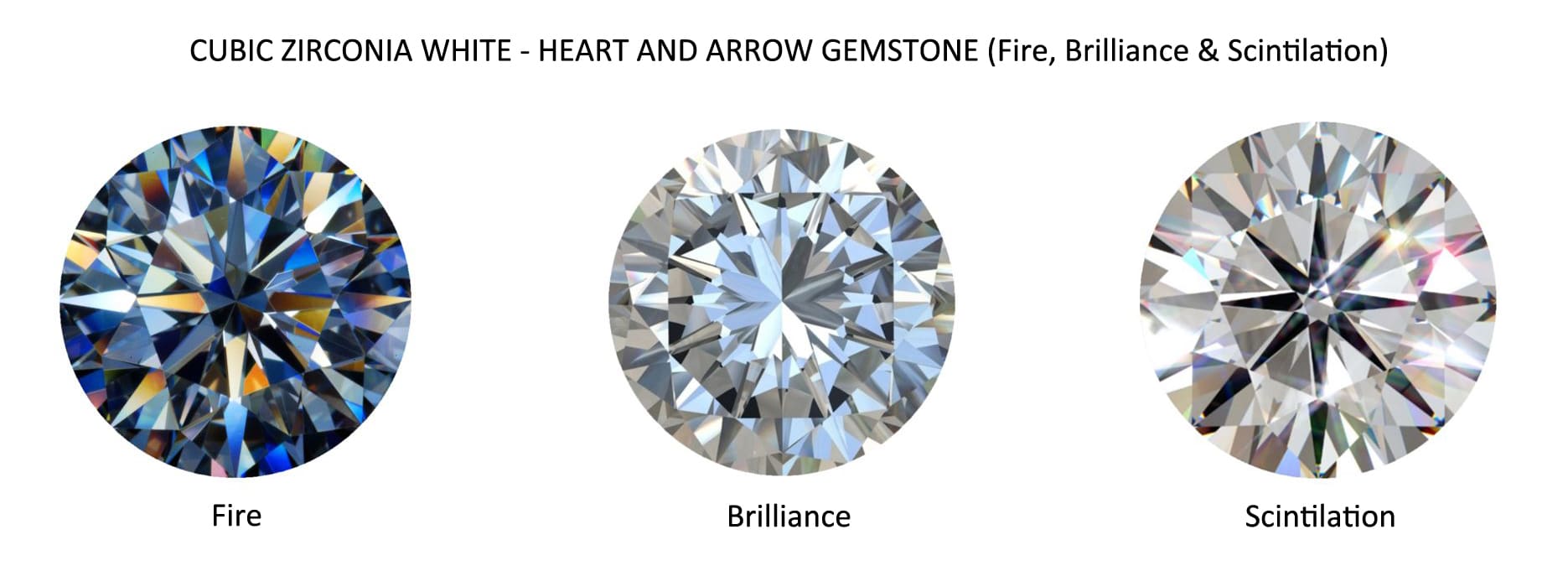
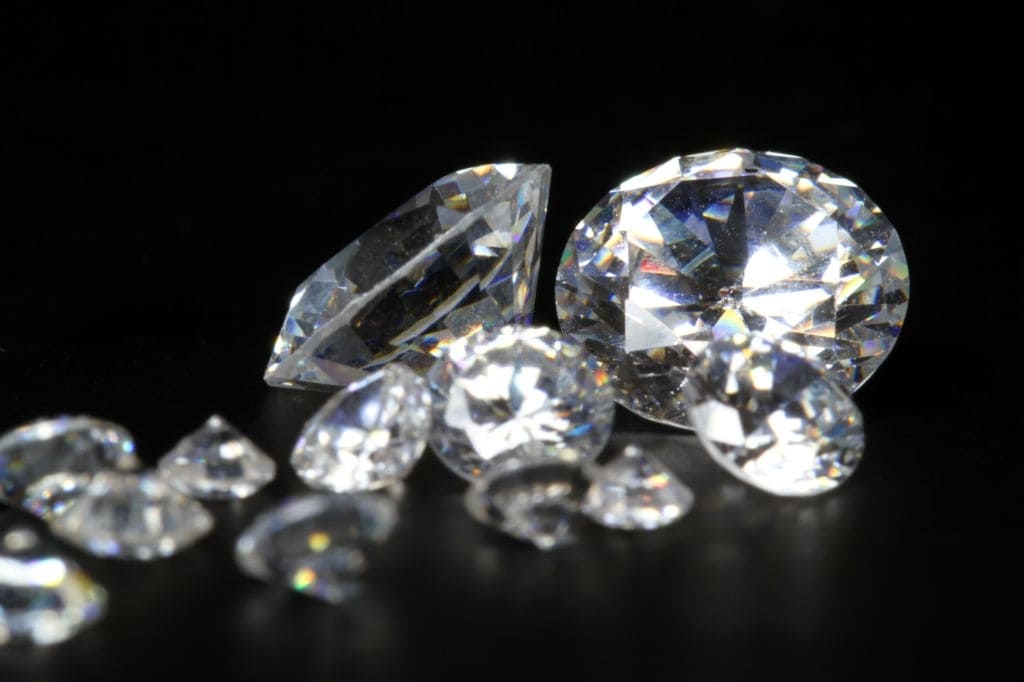
Cubic Zirconia History
Discovered in 1892, the yellowish monoclinic mineral baddeleyite is a natural form of zirconium oxide
The high melting point of zirconia (2750 °C or 4976 °F) hinders controlled growth of single crystals. However, stabilization of cubic zirconium oxide had been realized early on, with the synthetic product stabilized zirconia introduced in 1929. Although cubic, it was in the form of a polycrystalline ceramic: it was used as a refractory material, highly resistant to chemical and thermal attack (up to 2540 °C or 4604 °F).
In 1937, German mineralogists M. V. Stackelberg and K. Chudoba discovered naturally occurring cubic zirconia in the form of microscopic grains included in metamict zircon. This was thought to be a byproduct of the metamictization process, but the two scientists did not think the mineral important enough to give it a formal name. The discovery was confirmed through X-ray diffraction, proving the existence of a natural counterpart to the synthetic product.
As with the majority of grown diamond substitutes, the idea of producing single-crystal cubic zirconia arose in the minds of scientists seeking a new and versatile material for use in lasers and other optical applications. Its production eventually exceeded that of earlier synthetics, such as synthetic strontium titanate, synthetic rutile, YAG (yttrium aluminium garnet) and GGG (gadolinium gallium garnet).
Some of the earliest research into controlled single-crystal growth of cubic zirconia occurred in 1960s France, much work being done by Y. Roulin and R. Collongues. This technique involved molten zirconia being contained within a thin shell of still-solid zirconia, with crystal growth from the melt. The process was named cold crucible, an allusion to the system of water cooling used. Though promising, these attempts yielded only small crystals.
Later, Soviet scientists under V. V. Osiko in the Laser Equipment Laboratory at the Lebedev Physical Institute in Moscow perfected the technique, which was then named skull crucible (an allusion either to the shape of the water-cooled container or to the form of crystals sometimes grown). They named the jewel Fianit after the institute's name FIAN (Physical Institute of the Academy of Science), but the name was not used outside of the USSR.[citation needed] This was known at the time as the Institute of Physics at the Russian Academy of Science. Their breakthrough was published in 1973, and commercial production began in 1976. In 1977 cubic zirconia began to be mass-produced in the jewelry marketplace by the Ceres Corporation with crystals stabilized with 94% yttria. Other major producers as of 1993 include Taiwan Crystal Company Ltd, Swarovski and ICT inc. By 1980 annual global production had reached 60 million carats (12 tonnes) and continued to increase with production reaching around 400 tonnes per year in 1998.
Because the natural form of cubic zirconia is so rare, all cubic zirconia used in jewelry has been synthesized, or created by humans.
Synthesis
Worker monitoring melting zirconium oxide and yttrium oxide in an induction heated "cold crucible" to create cubic zirconia.
Currently the primary method of cubic zirconia synthesis employed by producers remains to be through the skull-melting method. This method was patented by Josep F. Wenckus and coworkers in 1997. This is largely due to the process allowing for temperatures of over 3000 degrees to be achieved, lack of contact between crucible and material as well as the freedom to choose any gas atmosphere. Primary downsides to this method include the inability to predict the size of the crystals produced and it is impossible to control the crystallization process through temperature changes.
The apparatus used in this process consists of a cup-shaped crucible surrounded by radio-frequency (RF) activated copper coils and a water-cooling system.
Zirconium dioxide thoroughly mixed with a stabilizer (normally 10% yttrium oxide) is fed into a cold crucible. Metallic chips of either zirconium or the stabilizer are introduced into the powder mix in a compact pile manner. The RF generator is switched on and the metallic chips quickly start heating up and readily oxidize into more zirconia. Consequently, the surrounding powder heats up by thermal conduction and begins melting, which in turn becomes electroconductive and thus it begins to heat up via the RF generator as well. This continues until the entire product is molten. Due to the cooling system surrounding the crucible, a thin shell of sintered solid material is formed. This causes the molten zirconia to remain contained within its own powder which prevents it from contamination from the crucible and reduces heat loss. The melt is left at high temperatures for some hours to ensure homogeneity and ensure all impurities have evaporated. Finally, the entire crucible is slowly removed from the RF coils to reduce the heating and let it slowly cool down (from bottom to top). The rate at which the crucible is removed from the RF coils is chosen as a function of the stability of crystallization dictated by the phase transition diagram. This provokes the crystallization process to begin and useful crystals begin to form. Once the crucible has been completely cooled to room temperature, the resulting crystals are multiple elongated-crystalline blocks.
The apparatus used in this process consists of a cup-shaped crucible surrounded by radio-frequency (RF) activated copper coils and a water-cooling system.
The reason behind this shape is dictated by a concept known as crystal degeneration according to Tiller. The size and diameter of the obtained crystals is a function of the cross-sectional area of the crucible, volume of the melt and composition of the melt. The diameter of the crystals is heavily influenced by the concentration of Y2O3 stabilizer.
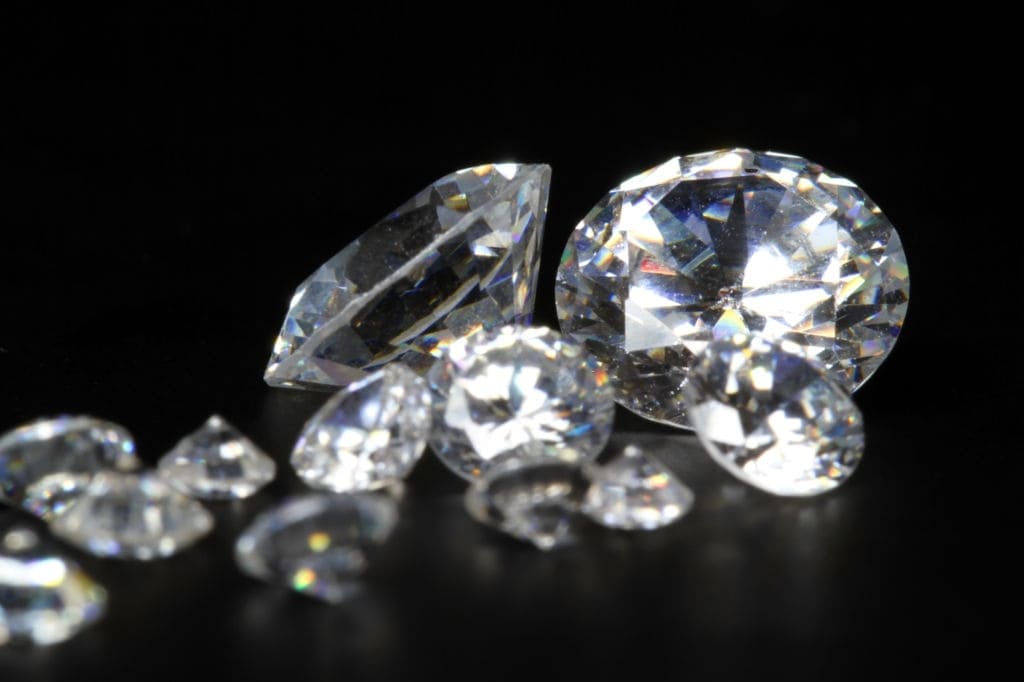
Phase relations in zirconia solids solutions
When observing the phase diagram the cubic phase will crystallize first as the solution is cooled down no matter the concentration of Y2O3. If the concentration of Y2O3 is not high enough the cubic structure will start to break down into the tetragonal state which will then break down into a monoclinic phase. If the concentration of Y2O3 is between 2.5-5% the resulting product will be PSZ (partially stabilized zirconia) while monophasic cubic crystals will form from around 8-40%. Below 14% at low growth rates tend to be opaque indicating partial phase separation in the solid solution (likely due to diffusion in the crystals remaining in the high temperature region for a longer time). Above this threshold crystals tend to remain clear at reasonable growth rates and maintains good annealing conditions.
Doping
Because of cubic zirconia's isomorphic capacity it can be doped with several elements to change the color of the crystal. A list of specific dopants and colors produced by their addition can be seen below.
| Dopant | Symbol | Color(s) |
|---|---|---|
| Cerium | Ce | yellow-orange-red |
| Chromium | Cr | green |
| Cobalt | Co | lilac-violet-blue |
| Copper | Cu | yellow-aqua |
| Erbium | Er | pink |
| Europium | Eu | pink |
| Iron | Fe | yellow |
| Holmium | Ho | Champagne |
| Manganese | Mn | brown-violet |
| Neodymium | Nd | purple |
| Nickel | Ni | yellow-brown |
| Praseodymium | Pr | amber |
| Thulium | Tm | yellow-brown |
| Titanium | Ti | golden brown |
| Vanadium | V | green |
Innovations of CZ (Cubic Zirconia)
In recent years manufacturers have sought ways of distinguishing their product by supposedly "improving" cubic zirconia. Coating finished CZs in a film of diamond-like carbon (DLC) or Amorphous Diamond is one such innovation, a process using chemical vapor deposition. See Russian Star. The resulting material is purportedly harder, more lustrous and more like diamond overall: The coating is thought to quench the excess fire of CZ, while improving its refractive index, thus bringing it more in line with diamond. Additionally, because of the high percentage of diamond bonds in the amorphous diamond coating, the finished simulant will show a positive diamond signature under Raman spectroscopy.
Another technique first applied to quartz and topaz has also been adapted to cubic zirconia: Vacuum-sputtering an extremely thin layer of metal oxide (typically gold) onto the finished stones creates an iridescent effect. This material is marketed as "mystic" by many dealers. Unlike DLC, the surreal effect is not permanent, as abrasion easily removes the oxide layer.

CZ (Cubic Zirconia) versus Diamond
Cubic zirconia is so optically close to diamond that only a trained eye can easily differentiate the two. There are a few key features of CZ which distinguish it from diamond, some observable only under the microscope or loupe. For example:
Dispersion : With a dispersive power greater than diamond (0.060 vs. 0.044) the more prismatic fire of CZ can be seen by even an untrained eye.
Hardness : CZ has an 8.5 to 9.0 on the Mohs' hardness scale vs. a rating of 10 for diamonds.
Specific gravity :CZs are heavyweights in comparison to diamonds; a CZ will weigh about 1.7 times more than a diamond of equivalent size. Obviously, this difference is only useful when examining loose stones.
Flaws : Contemporary production of cubic zirconia is virtually flawless, whereas most diamonds have some sort of defect, be it a feather, included crystal, or perhaps a remnant of an original crystal face (e.g. trigons).
Refractive index : CZ has a refractive index of 2.176, compared to a diamond's 2.417.
Cut : Under close inspection with a loupe, the facet shapes of some CZs appear different from diamonds.
In theory, many gems (such as CZs and diamonds) look best when the star facet, crown main facets, and upper girdle facets do not quite meet. (Per Step 11 of editor's note 36 to Marcel Tolkowsky's Diamond Design.) Diamond has such a high refractive index that having these facets meet at a single point does not cause much loss of fire or reflection. Diamonds normally have these facets meet at a point, because that is more symmetrical and reflects well on the cutter's precision. On the other hand, CZ has a considerably lower refractive index than diamond. CZs are often cut with 6-sided crown main facets, so that the star facets do not touch the upper girdle facets. This optimizes the brilliance and fire of the CZs.
In theory, many gems (such as CZs and diamonds) look best when the star facet, crown main facets, and upper girdle facets do not quite meet. (Per Step 11 of editor's note 36 to Marcel Tolkowsky's Diamond Design.) Diamond has such a high refractive index that having these facets meet at a single point does not cause much loss of fire or reflection. Diamonds normally have these facets meet at a point, because that is more symmetrical and reflects well on the cutter's precision. On the other hand, CZ has a considerably lower refractive index than diamond. CZs are often cut with 6-sided crown main facets, so that the star facets do not touch the upper girdle facets. This optimizes the brilliance and fire of the CZs.
In theory, many gems (such as CZs and diamonds) look best when the star facet, crown main facets, and upper girdle facets do not quite meet. (Per Step 11 of editor's note 36 to Marcel Tolkowsky's Diamond Design.) Diamond has such a high refractive index that having these facets meet at a single point does not cause much loss of fire or reflection. Diamonds normally have these facets meet at a point, because that is more symmetrical and reflects well on the cutter's precision. On the other hand, CZ has a considerably lower refractive index than diamond. CZs are often cut with 6-sided crown main facets, so that the star facets do not touch the upper girdle facets. This optimizes the brilliance and fire of the CZs.
The optimum angle of the main crown facets is steeper for diamond than for CZ. (According to Tolkowsky's model of the crown, for a given pavilion angle and girdle thickness). CZs are often cut so that the crown main facets do not touch the girdle. This allows the CZs to have a shallower crown angle, while still having the same crown height as a diamond with a similar cut.
Color : More precisely, the lack of color: Only the rarest of diamonds are truly colorless, most having a tinge of yellow or brown to some extent. By comparison, CZ can be made in most cases entirely colorless: equivalent to a perfect "D" on diamond's color grading scale.
Thermal conductivity : CZs are thermal insulators whilst diamonds are among the most efficient thermal conductors, exceeding copper. This makes telling the difference between diamond and CZ quite easy for those with the right tools.
Caring for Cubic Zirconia : Cubic Zirconia can be cleaned with any conventional jewelry cleaner or detergent. With such a high hardness and durability, you can use a brush to clean off dirt or oil also. Ultra clean jewelry cleaners may also be used on CZ and will not damage the stone. However, when using soap leaving a film that will dull the brilliance of the stone. Cubic zirconia should be cleaned frequently to remove oils from skin that also dull the brilliance of the gem.

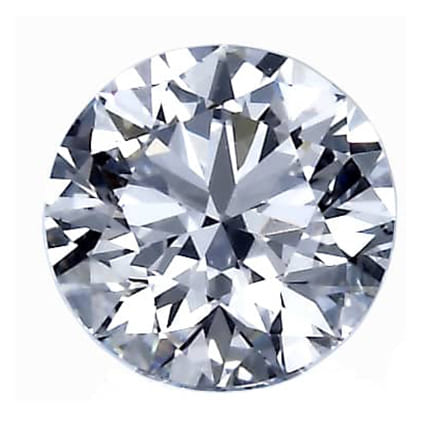
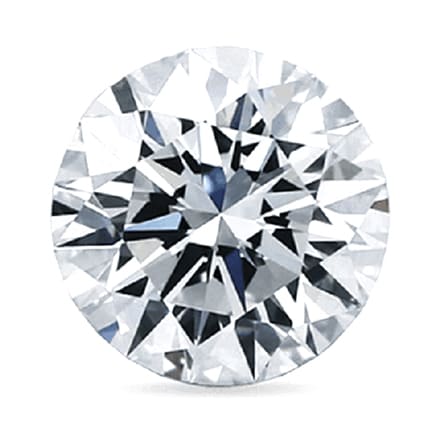
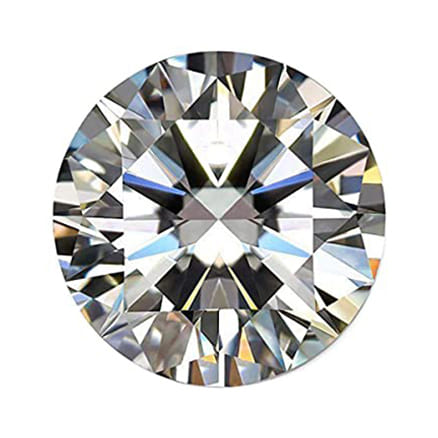
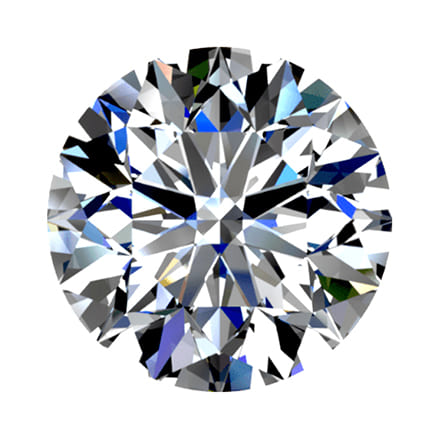
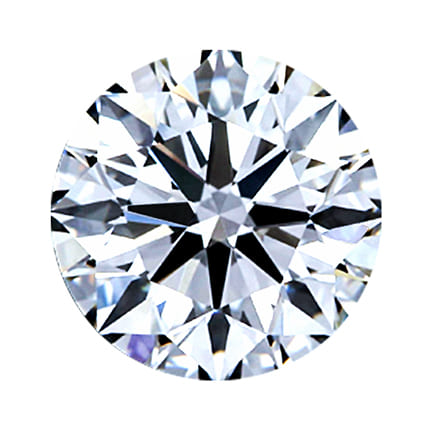
.jpg)
.jpg)
